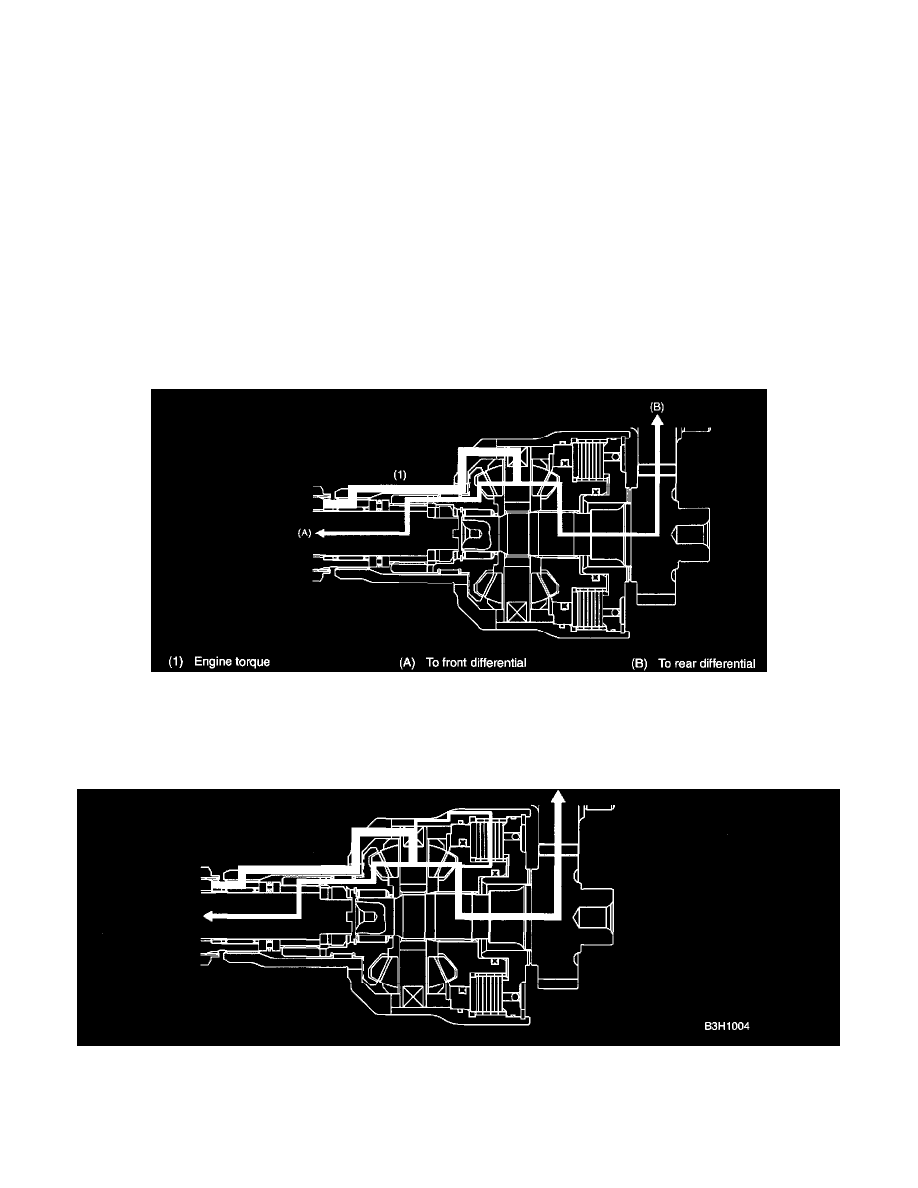Outback L.L.Bean Edition AWD F6-3.0L (2002)

between the outer and inner plates. The torque is then transmitted by the silicone oil between the center differential case and the rear side gear.
The greater the speed difference, the greater the shear force generated in the silicone oil. The relationship between the torque transmission and the
speed difference is shown in the figure below. As can be seen from the figure, the smaller the speed difference, the smaller the torque transmission
and the differential action.
2. HUMP PHENOMENON
Silicone oil is heated and expanded as differential action continues. This causes the pressure of air inside the viscous coupling to increase and the
pressure of oil between plates to decrease. As a result, the inner and outer plates are pushed together. This direct plate-to-plate contact causes a
non-viscous operation to occur, and this phenomenon is called "hump".
The hump eliminates the rotating speed difference between the center differential case and the rear side gear (or locks the differential), so soon
after it has occurred, the internal pressure and temperature drop. The viscous coupling then returns to the normal shear torque transmitting
operation. (The hump phenomenon does not occur under normal operating conditions.)
FUNCTION
When there is no speed difference between the front and rear wheels, the center differential delivers the engine torque to the front and rear wheels
at a ratio of 50:50.
When a rotating speed difference occurs between the front and rear wheels, the center differential operates to absorb it in a controlled way by the
function of the viscous coupling.
1. DURING NORMAL DRIVING
During straight-line driving on a flat road at a constant speed, all the four wheels rotate at the same speed. The center differential delivers engine
torque evenly to the front and rear drive axles. The viscous coupling does not generate shear torque because there is no relative movements
between the inner and outer plates.
2. DURING TURNS AT LOW SPEEDS
During turns at low speeds, rotating speed difference occurs between the front and rear wheels, as well as between the left and right wheels. More
particularly, the front wheels rotate faster than the rear wheels. The center differential then acts to absorb the speed difference to enable smooth
driving.
Although the speed difference is small under this condition, operation of the viscous coupling causes more torque to be transmitted to the rear than
to the front.
